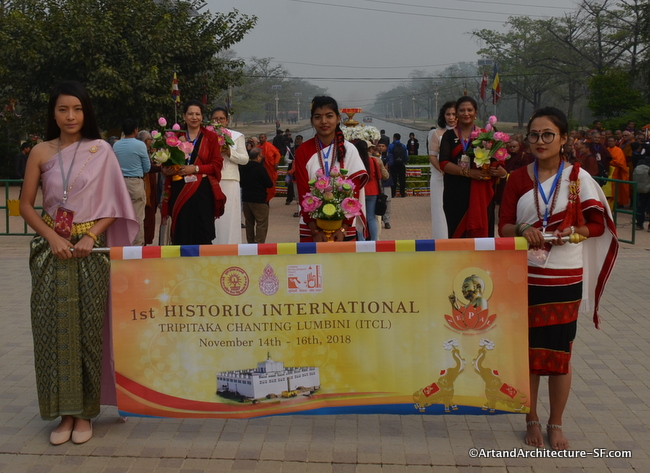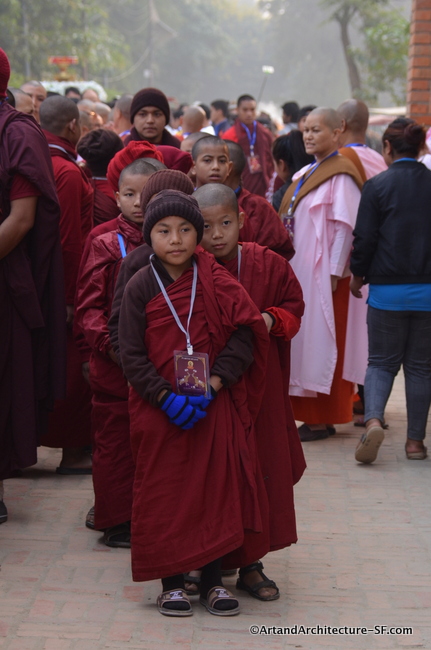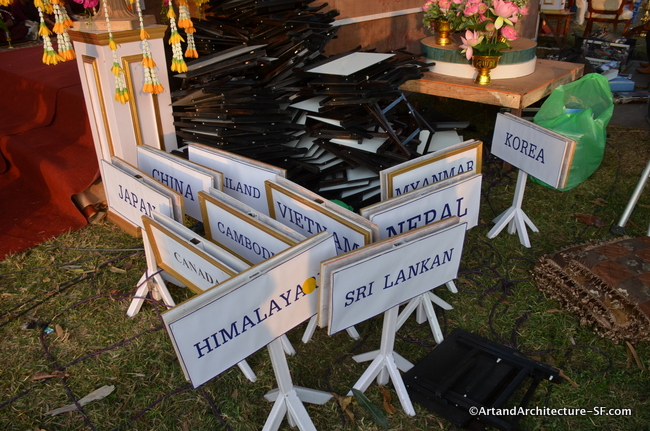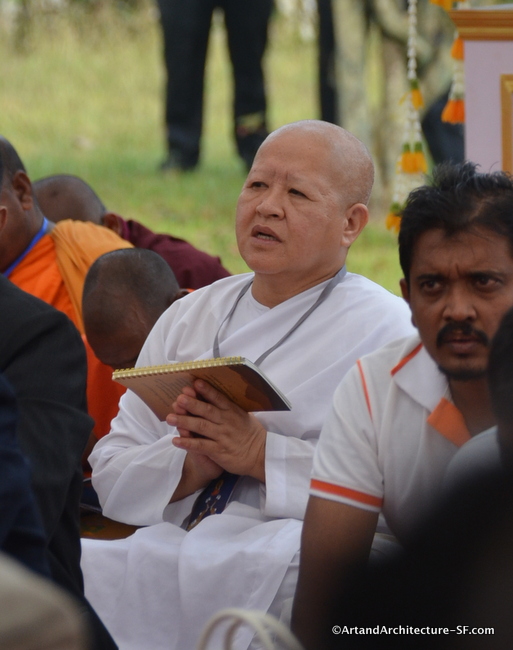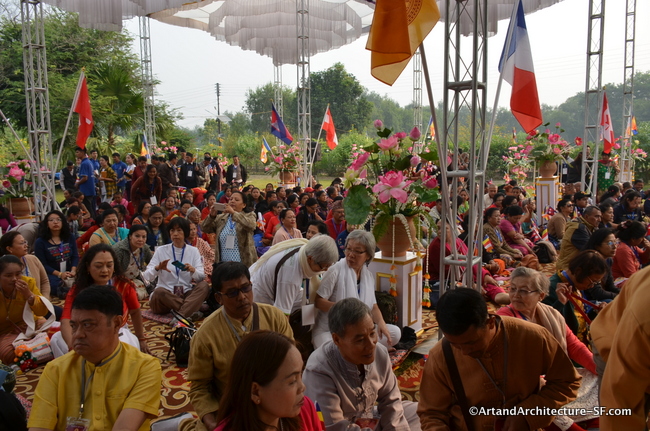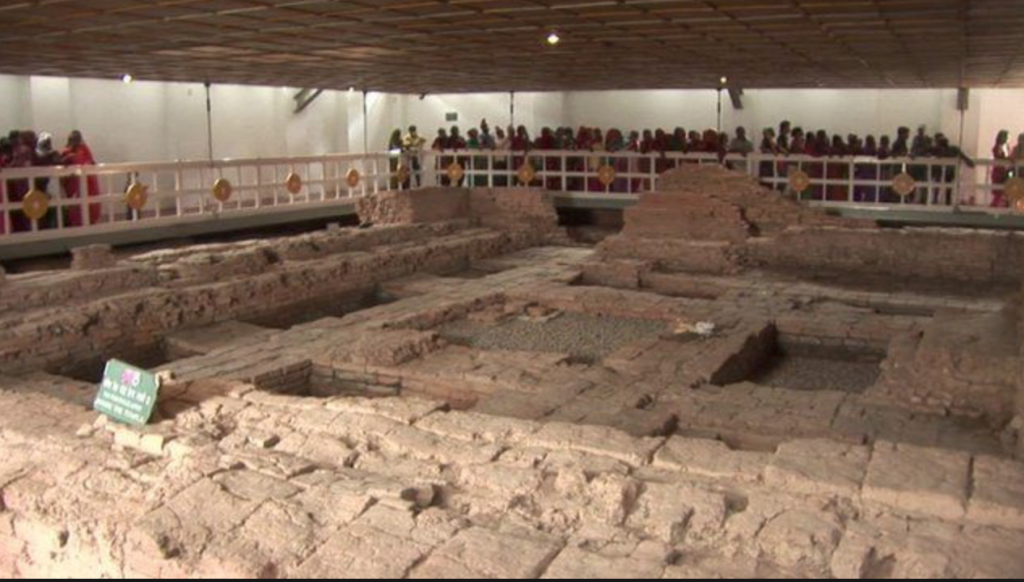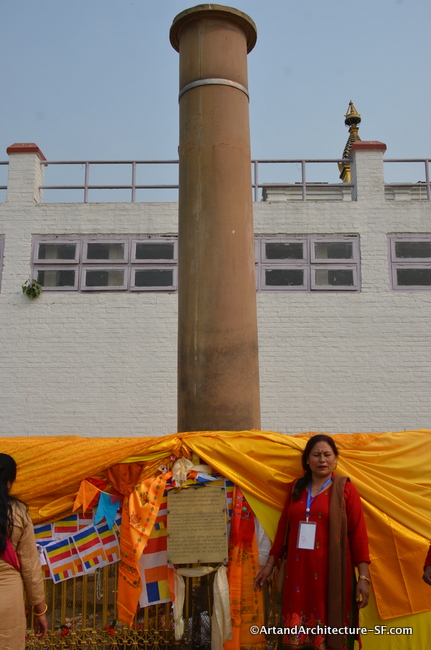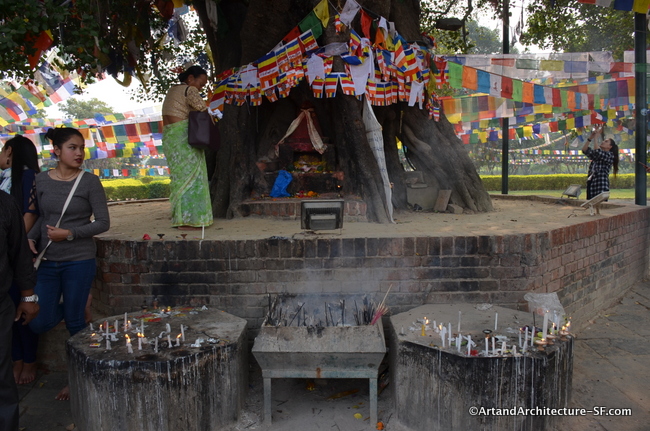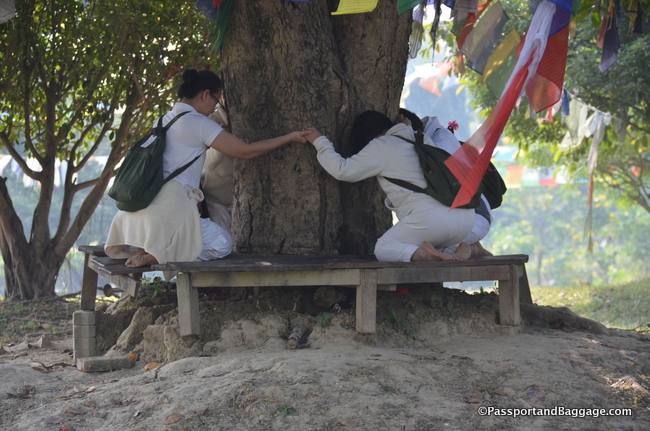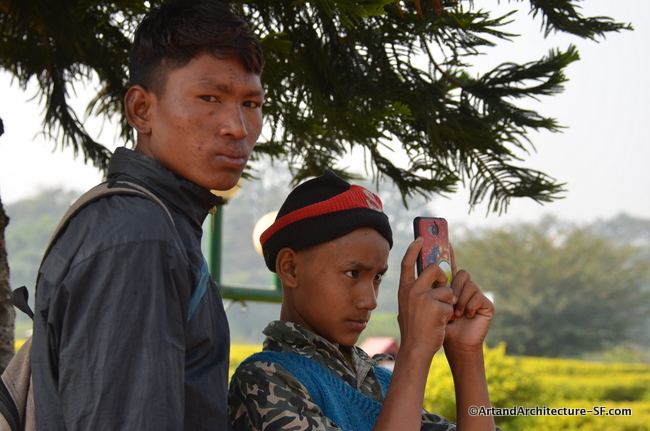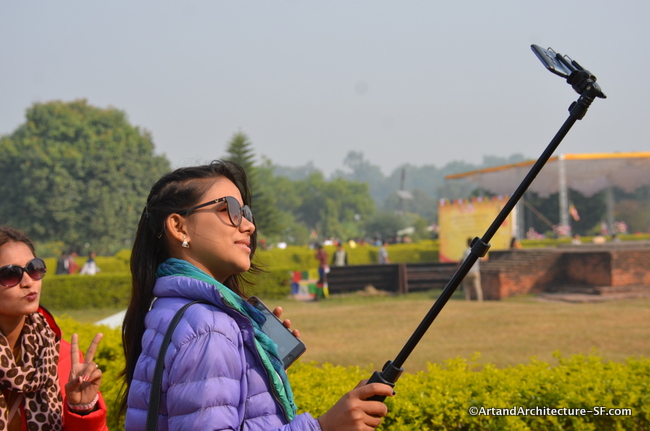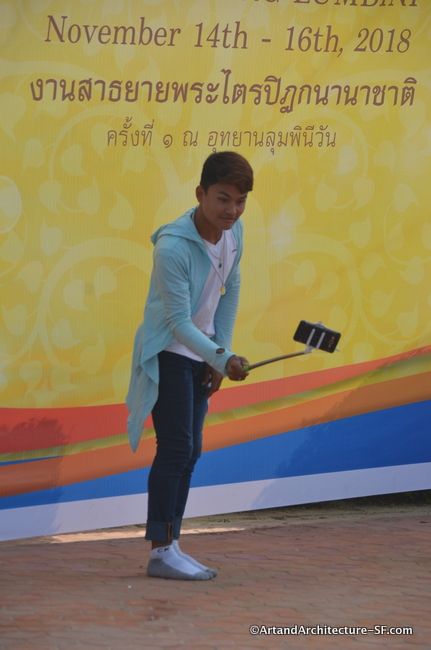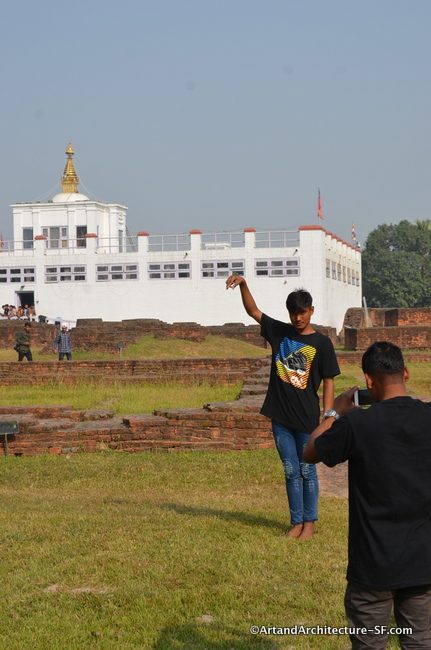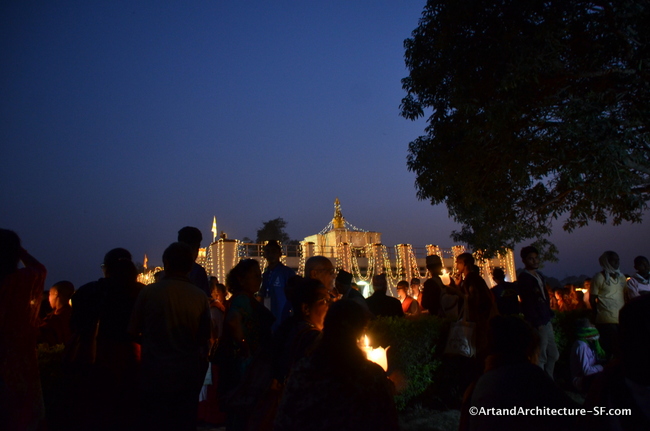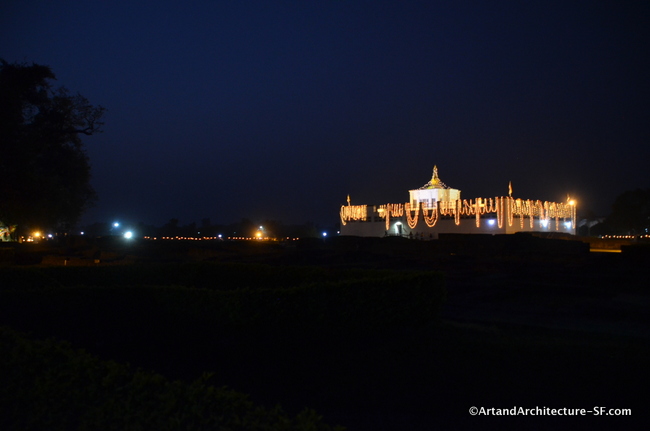November 14-18 2018
I am here as part of the 1st Tipitaka Chanting Ceremony ever held within the Maya Devi Temple Complex in Lumbini.
As with any historic moment, there is the usual fanfare.
A parade with beautiful women carrying flowers and banners.
The flower-laden throne carrying the Tipitaka.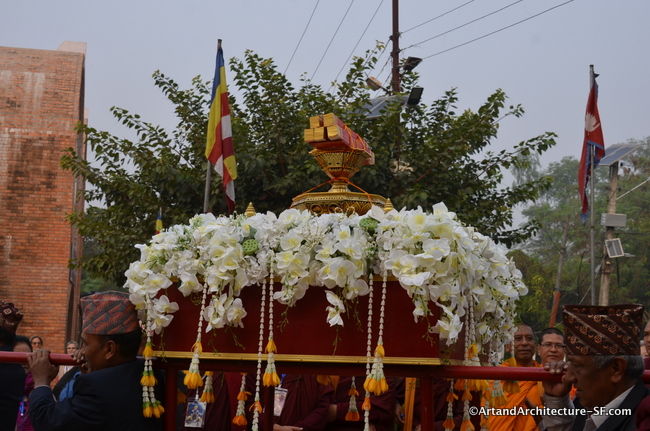 And streams of participants
And streams of participants
Then there is the opening ceremony with its slew of dignitaries.
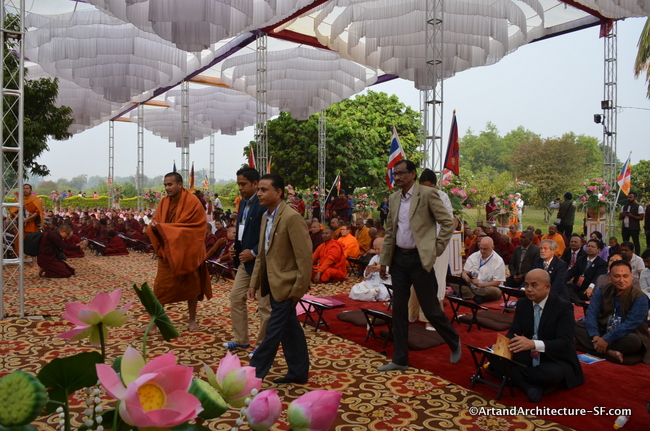 But once the chanting began it was a solemn and beautiful ceremony.
But once the chanting began it was a solemn and beautiful ceremony.
The Maya Devi Temple complex is the heart of Lumbini and a UNESCO World Heritage Site.
 Siddhartha Gautama is purported to have been born in 623 BCE in the gardens of Lumbini, which soon became a place of pilgrimage. Among those pilgrims was the Indian emperor Ashoka, who erected one of his commemorative pillars here.
Siddhartha Gautama is purported to have been born in 623 BCE in the gardens of Lumbini, which soon became a place of pilgrimage. Among those pilgrims was the Indian emperor Ashoka, who erected one of his commemorative pillars here.
The authenticity of the archaeological remains was confirmed in 1896 through a series of excavations after the discovery of the Ashoka pillar.
Other structures found within the Maya Devi Temple consist of brick structures in a cross-wall system dating from the 3rd century BCE to the present century. Also, there are the excavated remains of Buddhist viharas (monasteries) of the 3rd century BCE to the 5th century CE and the remains of Buddhist stupas (memorial shrines) from the 3rd century BCE to the 15th century CE.
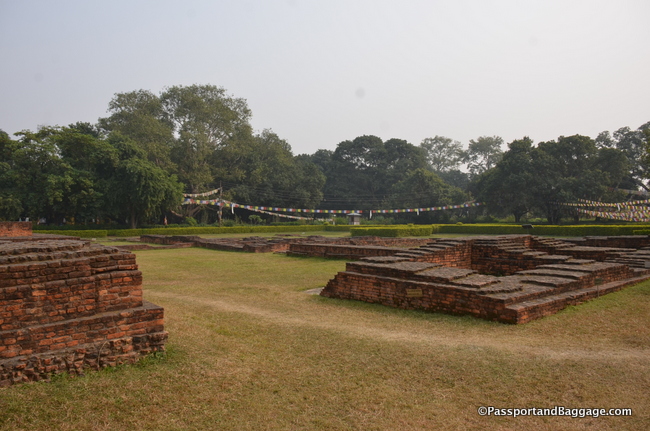 As with much of Buddist history, it is difficult to be accurate with the exact location of many Buddhist sites. The best information scholars have to go on is the writings of two Chinese explorers Xuanzen (7th Century CE) and Fa-hsien (399-413 CE), and the placement by Ashoka of his pillars.
As with much of Buddist history, it is difficult to be accurate with the exact location of many Buddhist sites. The best information scholars have to go on is the writings of two Chinese explorers Xuanzen (7th Century CE) and Fa-hsien (399-413 CE), and the placement by Ashoka of his pillars.
So, when in November 2013, an international team of archaeologists digging under the temple discovered the remains of an ancient tree shrine dated before 550 BCE it created quite a stir. The researchers speculated that the site is the earliest evidence of Buddhist structures and the first archaeological evidence of Gautama Buddha’s life. The excavation was headed by Robin Coningham of Durham University, UK, and Kosh Prasad Acharya of the Pashupati Area Development Trust, Nepal. According to Coningham, the shrine is “the earliest Buddhist shrine in the world.” The speculations of the researchers were widely reported in the international press, to the dismay of the rest of the scientific community, who mostly have disputed the conclusions of the researchers. Julia Shaw, a lecturer in South Asian archaeology at University College London, cautioned that the shrine may represent pre-Buddhist tree worship and that further research is needed. The conclusions drawn by the researchers were also heavily criticized by Buddhist scholar Richard Gombrich. However, it has been embraced by UNESCO.
The Ashokan pillar at the Maya Devi Temple was erected by Emperor Ashoka in 249 BCE. Ashoka visited Lumbini on the 20th year of his reign and erected the pillar in what was said to be the exact birthplace of Buddha.
The Ashoka pillar and the Maya Devi temple were explored by General Khadga Shumsher and German archaeologist Dr. Fuhrer. At that time, 1896, it was buried under a dense forest. The discovery of the pillar ended much speculation about the location of Lumbini. Inscribed on the pillar with is a Pali inscription in Brahmi script reading “Hitajayete Buddha” (Buddha was exactly born here).
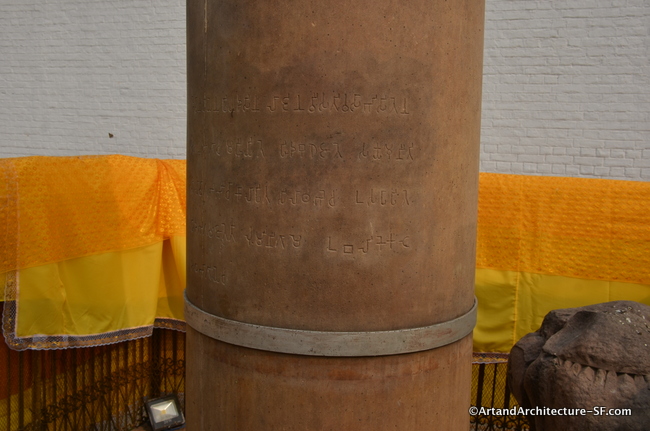 The emperor had also erected two other pillars during his visit to Lumbini and Kapilvastu, one in Gotihawa, the place of Krakuchhanda Buddha, and another at Niglihawa, the place of Kanakmuni Buddha.
The emperor had also erected two other pillars during his visit to Lumbini and Kapilvastu, one in Gotihawa, the place of Krakuchhanda Buddha, and another at Niglihawa, the place of Kanakmuni Buddha.
You will find a Bodhi tree at every Buddhist site, and at the Maya Devi Temple, there are many. This particular one, on the edge of the pool, has become a shrine unto itself.
This is a very sacred place and the followers of Buddha come in droves.
But there is also the tourist element.
At the end of the three-day Tipitaka Chanting Ceremony, there was an amazing candlelight procession. The pictures do not do it justice. It was inspiring and moving to be a part of it.
